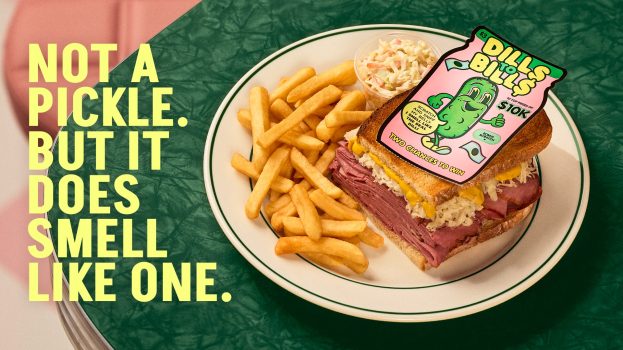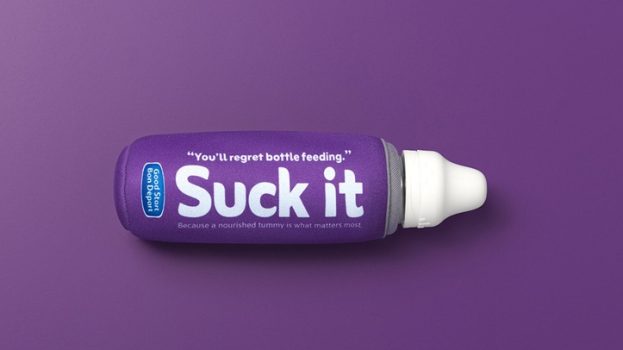McDonald’s has been very much lovin’ the splash its latest global campaign made on the company’s fortunes, reversing an unprecedented slide in sales over several years.
In Canada, McDonald’s is marketer of the year in the QSR category for aggressively changing its marketing to reflect the new social reality of increased health consciousness without losing sight of the firm’s brand and heritage.
The now signature global ‘I’m Lovin’ It’ campaign launched in September 2003 (in Canada, dugg.ca, an award-winning online viral campaign by The Marketing Store, was used to build awareness and excitement for the launch) and has since continued to pick up steam, especially with its young target.
Laurie Laykish, VP marketing at Toronto-based McDonald’s, says, ‘positive brand shifts’ were already starting to occur in mid-2003, but ‘I’m Lovin’ It’ accelerated gains.
Since early 2003, Laykish says sales at McDonald’s Canada are up almost 9%. Trial of the new menu choices is also up with the salads seeing a 58% increase during the period. Same-store sales were up 10.8% in the U.S. in September and the company reported that earnings-per-share for the third quarter were up a huge 42%. While McDonald’s does not release separate figures for Canada, Laykish says performance in Canada is ‘consistent.’
Going into 2004, McDonald’s identified its challenge as appealing to several key demos – moms with kids, kids and particularly young adults. It was decided that sports, music and fashion were the keys to reaching the latter demo. Messages were created that spoke to each demo using these themes (and about 90% of all creative for Canada was done in Canada by Cossette, according to the agency).
Cossette’s homegrown campaigns proved successful. One major execution effectively leveraged – what else – hockey and Canadian icon Wayne Gretzky. For its Hockey Trophies promo in February, a line of replica, collectible NHL trophies were promoted via TV, newspaper and merchandising and targeted an 18-24 demo. Laykish says many of the trophies sold out before the promotion ended.
In more hockey-related work, the venerable November-December hockey cards promotion, which has run for over 10 years, saw sales of the cards increase 7% over the previous year. McDonald’s was, of course, an Olympic sponsor. The company used its sponsorship primarily to build awareness and launch its Chicken Selects. Laykish says awareness of McDonald’s as a sponsor rose from 25% in early 2003 to 63% after the Games.
The Big Mac Meal Tracks promotion offered youth free music downloads. TV and print creative featured young people enjoying sports and music, and while the images came from the U.S., Cossette used music from Canadian musicians and the promotion was launched in downtown Toronto with a performance by Canadian band, the Conti Brothers. Laykish says the promotion worked to raise McDonald’s profile with the target and generated 65% awareness in one week. Consumers downloaded a whopping 141,896 songs for a 1.34% redemption rate.
Finally, a graphic T-shirt execution for McDonald’s’ new ‘salads plus’ line featured young women wearing Ts with expressive slogans on them such as ‘Loved by some, wanted by plenty.’
Marilyn Barefoot, VP client services at Toronto-based Cossette, says the insight for the T-shirt campaign came from noticing how Hollywood stars were popularizing them at the Oscars. ‘More and more young, confident, energetic women are expressing themselves [this way]. So because we felt that our target audience for salads and ‘salads plus’ was exactly that – clever, confident, young – that’s how we felt we could communicate with them.’
McDonald’s hasn’t been slow to jump on the diet-crazy bandwagon and the focus of its marketing reflected that in the past year. Laykish points to the increased number of healthy menu items, from a variety of salads to an apple slice and caramel treat for kids as examples of the new direction.
Last spring, the ‘go active’ promotion for the adult Happy Meal gave out ‘stepometers’ as a way of highlighting McDonald’s’ commitment to what Laykish describes as a ‘healthy lifestyle.’ (Sales went up 12% during the April advertising period.)
Subs called toasted deli sandwiches have also been introduced this year in select markets. The healthy alternative was meant to target young adults, but Laykish says McDonald’s found young mothers were equally interested. ‘It gives her a choice of a sandwich when she comes in for a happy meal for the kids,’ says Laykish.
And while McDonald’s Canada is reluctant to take credit, its Lighter Choices menu made its debut in Canada in 2002 and was then adopted in the U.S. in 2003. ‘Certainly some of the learnings did influence [the U.S. adopting the menu last year],’ says Laykish.
Even the venerable Monopoly game has received a twist to keep it contemporary. Brought back after a three-year absence from McDonald’s’ marketing plan, the promotion this time has an online component as well.
It’s true that McDonald’s isn’t re-inventing the wheel, but the cultural icon was arguably in danger of going the way of Xerox or Kodak, given new marketplace realities related to increased competition and changing tastes. But with a combination of new and revamped offers and a campaign that has resonated with its target, McDonald’s has found itself again. Now if only they would bring back the McDLT….























